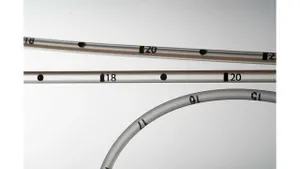Polyimide composite tapes protect Curiosity from the heat
Customized multi-layer thin film tapes based on polyimide are ensuring that the Mars rover Curiosity begins its journey across the red planet's surface searching for signs of sustained microbial life with ultimate protection from the extremes of the Martian environment.
August 9, 2012
Customized multi-layer thin film tapes based on polyimide are ensuring that the Mars rover Curiosity begins its journey across the red planet's surface searching for signs of sustained microbial life with ultimate protection from the extremes of the Martian environment.
NASA's Jet Propulsion Laboratory employed a special reinforced tape from Dunmore (Bristol, PA) created to insulate all of the wiring inside the Mars Rover. The insulating tape ensures the electrical currents from the rover's different systems don't interfere with each other and impede the rover's operation. Dunmore created the tape by combining DuPont Kapton polyimide film with a 3M adhesive and fiberglass reinforcement layer. "Getting the rover to Mars was an enormous task. Now it's time for the payoff - the exploration and research. Our insulating tapes will help prevent operational failures as the probe travels around Mars and sends new knowledge back to Earth," says Dunmore Vice President John Jordon.
|
Fiber reinforced polyimide tapes protect wiring inside Mars rover. |
Dunmore tapes and insulation blankets have been used in almost every major space program of the last 20 years, including the Space Shuttle program, Hubble Telescope, International Space Station, and NASA's Juno and Aquarius exploratory probes. With increasing demand from public and private organizations launching satellites into orbit, Dunmore expects steady growth in space program opportunities, such as supplying multi-layer insulation (MLI) to the next-generation GPS III program, which will encompass a minimum of 30 new satellites.
Temperature extremes
Today's spacecraft see a multitude of temperature fluctuations that can range from lows of -100°C to highs of +150°C (-150°F to +300°F), depending the Spacecraft's orbit. This can be low earth orbit (LEO), geosynchronous earth orbit (GEO), synchronous or interplanetary orbit and whether the spacecraft is of a design that spins, or is stationary in orbit.
Orbiting in the shade of earth or the spacecraft's own shadow can pose a challenge in keeping the vessel stable in the rigors of space. The craft can swing quickly to the cold side (typical -125°C / -195°F) when in the shadows. On the other hand, the spacecraft can experience extremely high temperatures, typically +150°C (+300°F), when exposed to the sun. Furthermore, there is a substantial amount of heat generated from the spacecraft's onboard equipment. Therefore, the spacecraft material must be highly adaptive to protect from both extreme heat and cold. These conditions can be controlled by using MLI blankets to protect the delicate instrumentation for both internal and external applications.
Polyimide and/or polyester layers (according to design, ranging from 5 to 30 layers) that are vapor deposited with 99.99% aluminum on one or both sides assist in the MLI material's heat management. As it is very difficult to design an MLI blanket that reflects 100% of incident radiation, an MLI design can range from a few simple layers, to a complex array of blankets that completely surround the Spacecraft and many of its external components. The designs of these layers typically reflect 95% of radiation back away from the spacecraft. The total effect by the time the radiation energy makes its way to the innermost layers, is effectively a 100% reflective barrier.-[email protected]
About the Author(s)
You May Also Like



